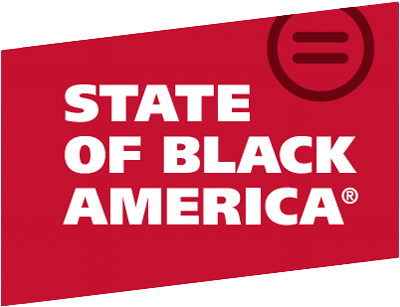At this stage in the “diversity in the workplace” conversation, the business case has been made. Time and time again, researchers have provided hard metrics that support the inclusion of women, people of color, and others who bring unique perspectives—and rarely has doing the right thing so closely aligned with doing the most profitable thing. But many companies still find themselves struggling to enact the cultural change required to drive this type of change forward within their organizations. And we’re starting to see a backlash among some in Silicon Valley who are sick of hearing they need more women and people of color in their ranks.
The consequences of this backlash are dire, not just to the industry, but to Black and Latinx people. While companies risk losing their competitive edge and seeing jobs go unfilled, Black and Latinx people risk being shut out of the economy, seeing inequity widen, and having their livelihoods threatened. Consider the facts: on the economics side, the median net worth of a white family in the US ($132,000) is more than six times that of a Black and Latinx family ($9,000 and $12,000, respectively) combined; whereas, median pay for software engineers hovers around $100,000. On a day-to-day basis, we see how products, services, and algorithms shape how we live and work. The lack of racial equity in tech companies manifests in incidents like self-driving cars that don’t see Black people or Mexican restaurants being given lower rankings because AI associates ‘Mexican’ with derogatory terms like ‘illegal.’ Our lives and livelihoods are literally at stake.
Given these consequences, tech leaders need to go beyond the business case and embrace the moral and economic imperatives of building companies and an economy that truly works for all. This imperative is even more critical during a time when our rights and lives are under attack by newly emboldened racists. Yet as the stakes get higher, the desire to retreat can be seductive. In these moments, commitment matters more and can have greater impact.
Unfortunately, there are no easy steps. Tech companies don't seek “one-size-fits-all” solutions when building their products, so why are they being less thoughtful when it comes to integrating their workforces? Racial equity and inclusion require buy-in, financial investment, training, and commitment throughout the organization. Goals and values around diversity and inclusion are explicit, measured, and the whole organization is clear on its role in achieving them.
For companies looking to lay a foundation and begin this work, there are some key practices and lessons to be mindful of, especially at this moment when our notion of “diversity” is becoming so diluted that it’s used to describe the status quo.
- Seek (and share) more robust data: More and more companies are releasing their diversity numbers, highlighting where they’ve grown and where they’ve fallen short. However, this data is often just a snapshot of what is a larger, longer process of employee recruitment, retention, and advancement. Get the demographics at the top of your recruitment funnel, the selection funnel, and retention data. Examine employee experience segmented by population to see who is thriving, who is struggling, and why. These are the kind of measurements that will reveal the hidden complexities of your organization’s inclusivity.
- Create a theory of change: Like all difficult initiatives, building a more diverse, inclusive company culture requires a strategy. "More people" is not strategy. Develop an opinion about why your organization is so segregated. Is this a network problem, an inability to work with diverse sets of people, unjust hiring practices—all three? Develop a plan for those issues. “Hire more people” is not a plan. Create realistic, as well as “stretch” goals, and hold yourself accountable. Some companies have gone as far as publicly stating their goals for diversifying their workforces and the amount of money, time, and programming they are dedicating to such efforts. In doing so, companies establish accountability internally and externally.
- Get specific about culture and values: Culture fit is widely accepted as the hiring holy grail at most tech companies; but without appropriate training and guidance, it too often becomes code for “someone who reminds me of me,” reinforcing homogeneity. Kaya Thomas, a two-time Code2040 fellow, said it best in her Medium post: “I’m not interested in ping-pong, beer, or whatever other gimmick used to attract new grads. The fact that I don’t like those things shouldn’t mean I’m not a “culture fit.” I want to create amazing things and learn from other smart people. That is the culture fit you should be looking for.” We often see companies send employees to interview candidates for strategic roles without giving them any guidance around standard questions to ask. This is an open invitation for bias to seep into your hiring practice. To avoid it, spend some time defining what cultural attributes will make someone effective in the given role and company—the ability to balance speed and attention to detail, for example. Ensure your hiring managers are filtering for these specific attributes, not just a general sense of whether or not you’d mind getting stuck in an airport with that person.
- Invest in management training: Managing people is a competency which directly impacts your business’s ability to execute on your goals. As you look to hire a more diverse workforce, the associated challenges (ensuring employees are engaged, supported, and provided with appropriate feedback and stretch opportunities at the right times) are magnified. There are certain nuances that might not be intuitive for managers of a diverse employee base. Certain events disproportionately impact communities of color, such as the shooting of young Black men by police, or the acquittal of the police officers involved. It may not be obvious to white managers that they should check in with their teams to see how people are feeling and whether they need time or space following one of these traumatic events. That kind of empathy and communication can be trained, and a culture that supports it can be built with the right investment in manager training.
Reverend Jesse Jackson has called racial equity in tech “the next step in the civil rights movement”—and with good reason. Ensuring we have access to the economic and social capital of the tech industry is critical to the health, wealth, and freedom of our communities. Companies that recognize this need and want to be allies in this work can start with the steps above and commit to more than their bottom lines; they can commit to leading the charge in creating a sector and an economy that work for all.




